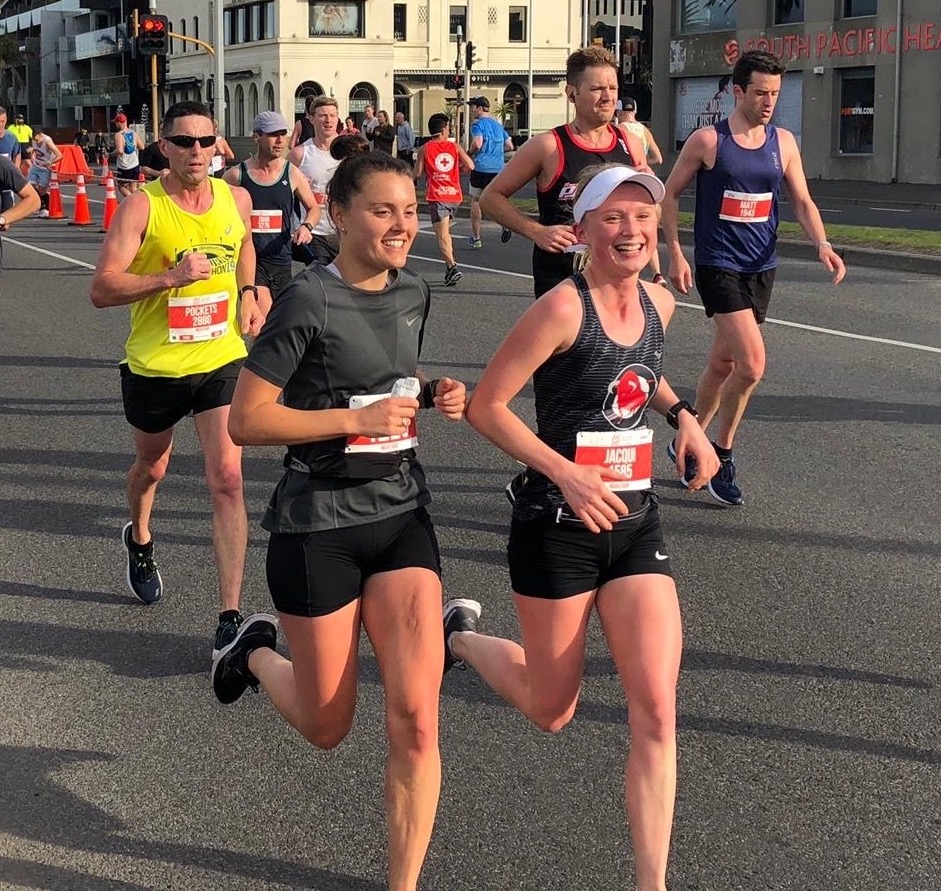Visit
Physiosports Brighton,
429 Nepean Highway, Brighton East,
3187, VIC, Australia
Call
Fax
03 9596 9155
physiosports@physiosports.com.au

Seventeen months ago, I underwent an ACL reconstruction following a skiing accident. Looking back on this moment, waking up with a swollen and painful knee wrapped in bandages, I definitely wasn’t sure whether I would be able to run again, let alone run a Marathon.
Fast forwarding through 17 months of rehabilitation and training and I have now made it back to running 42.2k with no injury or pain. I can’t say it has been an easy road nor has it been smooth sailing, however the effort put in across this time has been worth every second to finally cross the finish line at Melbourne Marathon 2019.
From the first day after my reconstruction, I knew it was going to be a long pathway to get back to running. However, the biggest advantage I had was the 14 weeks of prehabilitation I had completed prior to surgery, consisting of physiotherapy exercises, gym programs, sports physician rehab sessions, Pilates, and pool sessions. Very rarely did I miss a session and there were many days I completed 2 sessions. Therefore, after the operation I was starting from a base that was almost as strong in the gym as I was prior to the accident. Of course, after the operation I did lose a lot of this strength from being immobilised on crutches, however every day I completed my physiotherapy exercises as often as I could in between icing every 2 hours to avoid losing this strength. And yes, I had to go to a Physiotherapist too, there was no treating myself.
Those first 12 weeks were definitely harder than running the marathon, I can tell you that! Who would have thought learning to walk off crutches would be so hard! And then to being told to balance on one leg … well I can definitely tell you I haven’t been that scared in a while, even with the wall in front of me! And the day that I was able to finally sit on my heels again, I sent a picture to all my friends and family to celebrate! Then finally came the day I was cleared to trial ‘jogging’. Well that 30 seconds of jogging followed by 30 seconds of walking, repeating a few times, was one of the most exhilarating runs of my life, I couldn’t wipe the smile off my face all day!

I think the most important part of this first 12 weeks was acknowledging every tiny step and celebrating them along the way rather than focusing on what I couldn’t achieve. Taking photos along the way and logging my little runs on Strava helped me do just that and provided me with regular entertainment to look back upon.
After the first 12 weeks, it was time to start running again. With no goal in mind at this point other than learning to run pain-free, it was a really fun way to get back into the sport I loved. To motivate myself, I set small goals to achieve each week whether time or distance. However, there were a few important factors in my training that helped me back to running a Marathon.

The first and biggest key to success for me was listening to my body. And no, I didn’t always get this right, but I definitely got better as I went along. Recognising when your body is exhausted and learning to back off or recover is a crucial part of training to avoid niggles and overtraining. I definitely suffered a few episodes of patello-femoral joint pain as a result of pushing too hard. But with some help from physiotherapists and a little bit of rest and recovery, I was always able to bounce back.
The second most important factor for me was strength and conditioning. From day one, this was the single most important thing for me achieving each movement goal. To be able to walk, I needed to be strong. To be able to squat, I needed to be stronger. To be able to run, I needed to be stronger again. If there was ever a training session I had to miss in my week, I would always try to prioritise strength and skip my run. Initially I completed my rehabilitation exercises multiple times per day, then progressed to alternating my running days with gym sessions once I had returned to running. This continued right through my training program, completing 3 sessions in the gym per week alongside 1-2 Pilates sessions per week to keep my body strong, relatively injury free, and able.

The third key point to recovery was not overloading my knee when returning to running. For my program, running no more than 3 times weekly on alternate days was critical to allowing my knee time to recover from the load. These sessions varied during the week with 1 session focusing on speed and intervals, the second an intermediate distance run with varying drills, and lastly one long slower run per week to gradually increase my distance. Initially this was 2 x 5 minute jogs with some lovely muscle soreness after my run. It’s incredible to think how hard that 5 minute running session was, and thinking back I had the same amount of muscle soreness as when I completed my final long run of 38k in training before the Marathon.

There were definitely many moments along the way that I questioned whether I would reach the end, however keeping up my rehabilitation right the way through enabled me to run every step of the 42.2k to complete Melbourne Marathon. I have definitely not fully completed my rehabilitation, it is a long pathway, but I am well on the road to the finish. Now I have to work out what my next Marathon will be 🙂